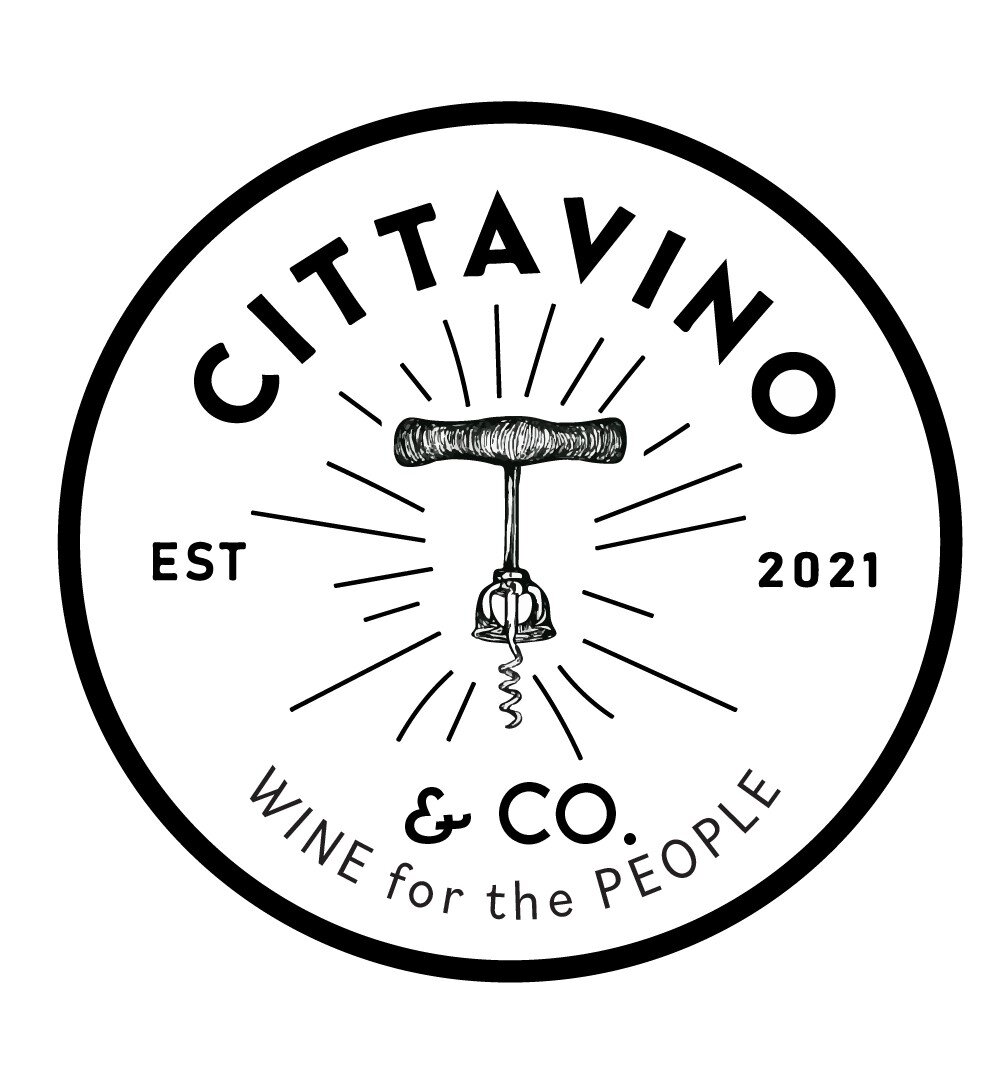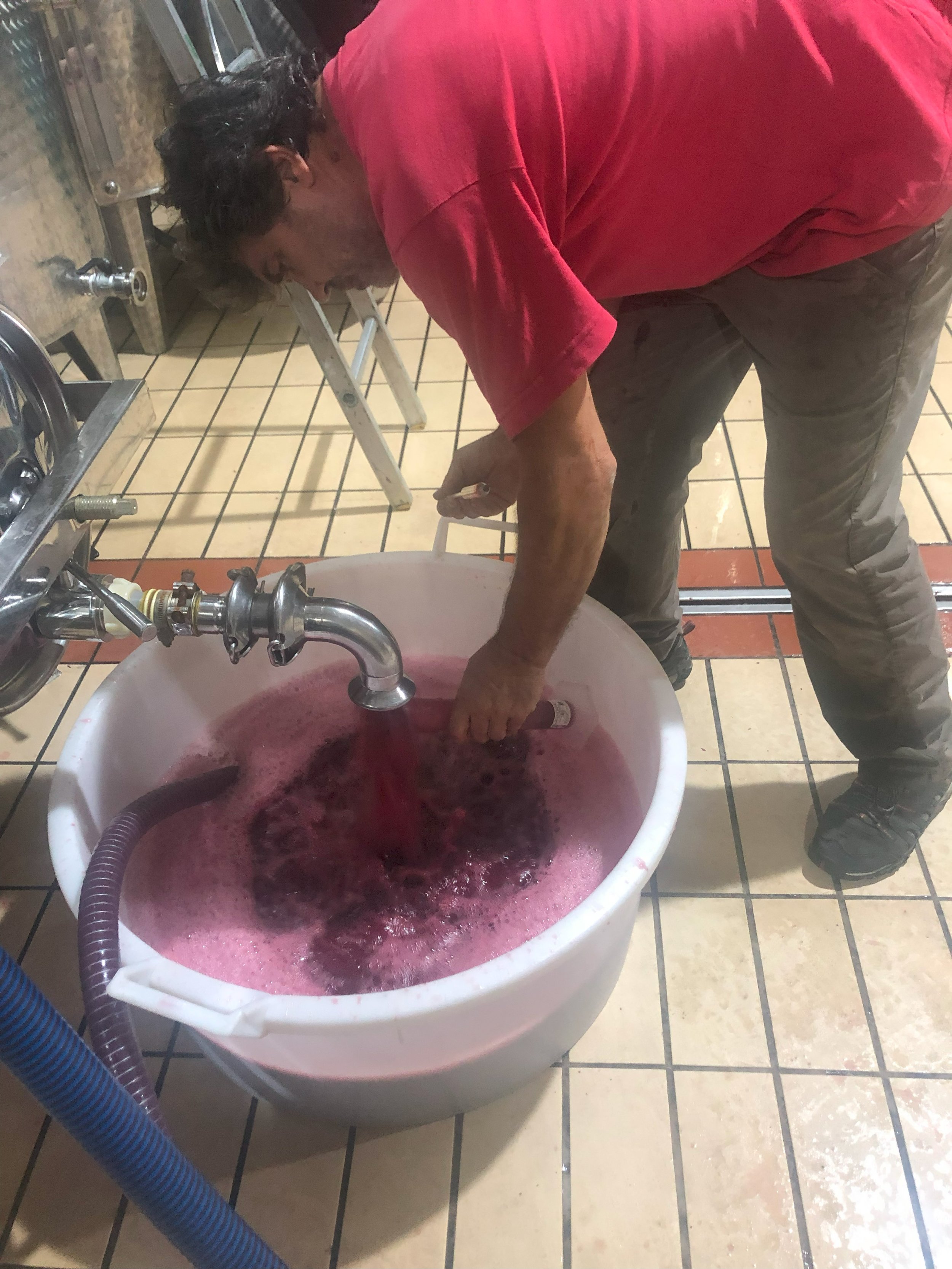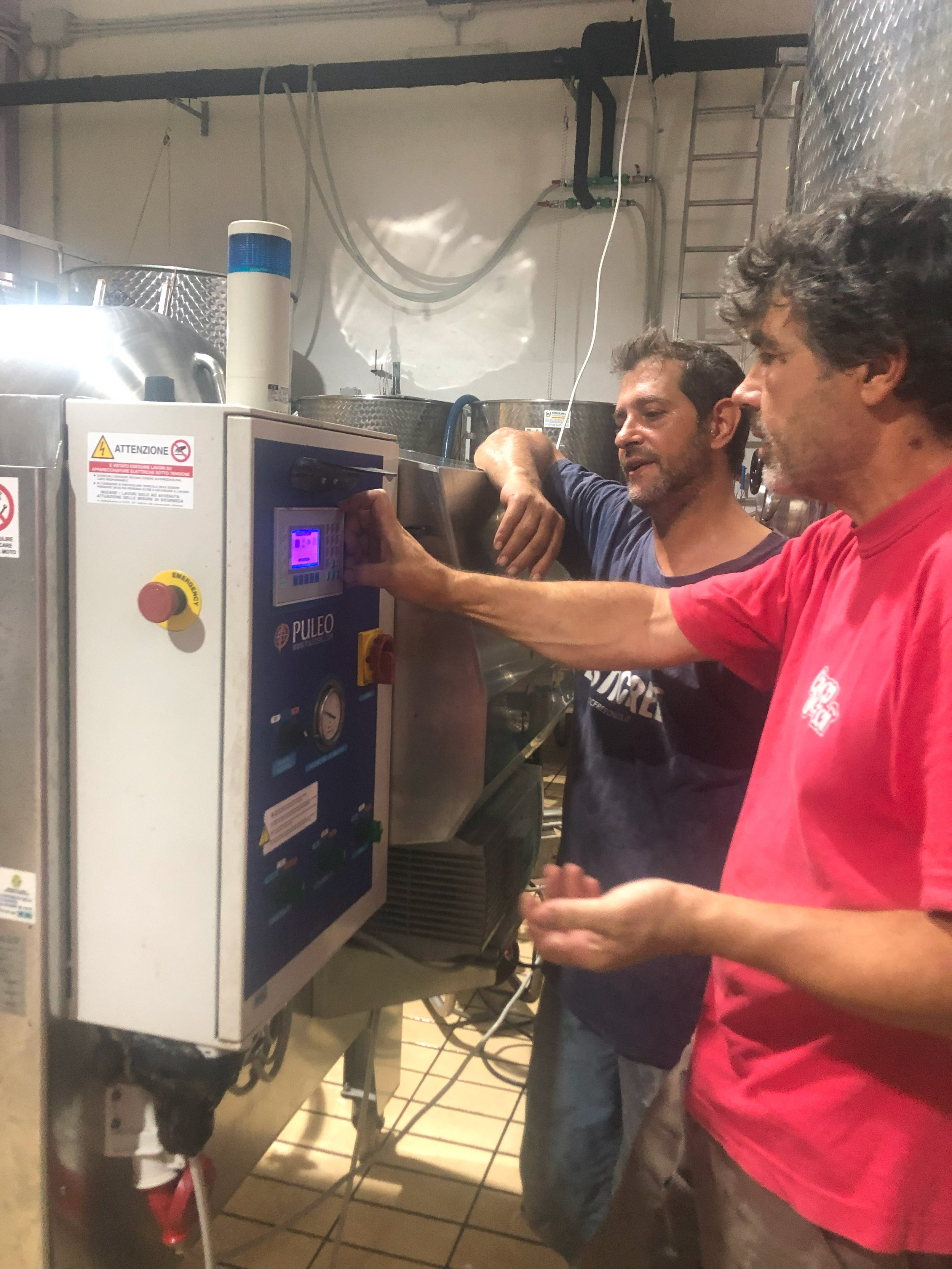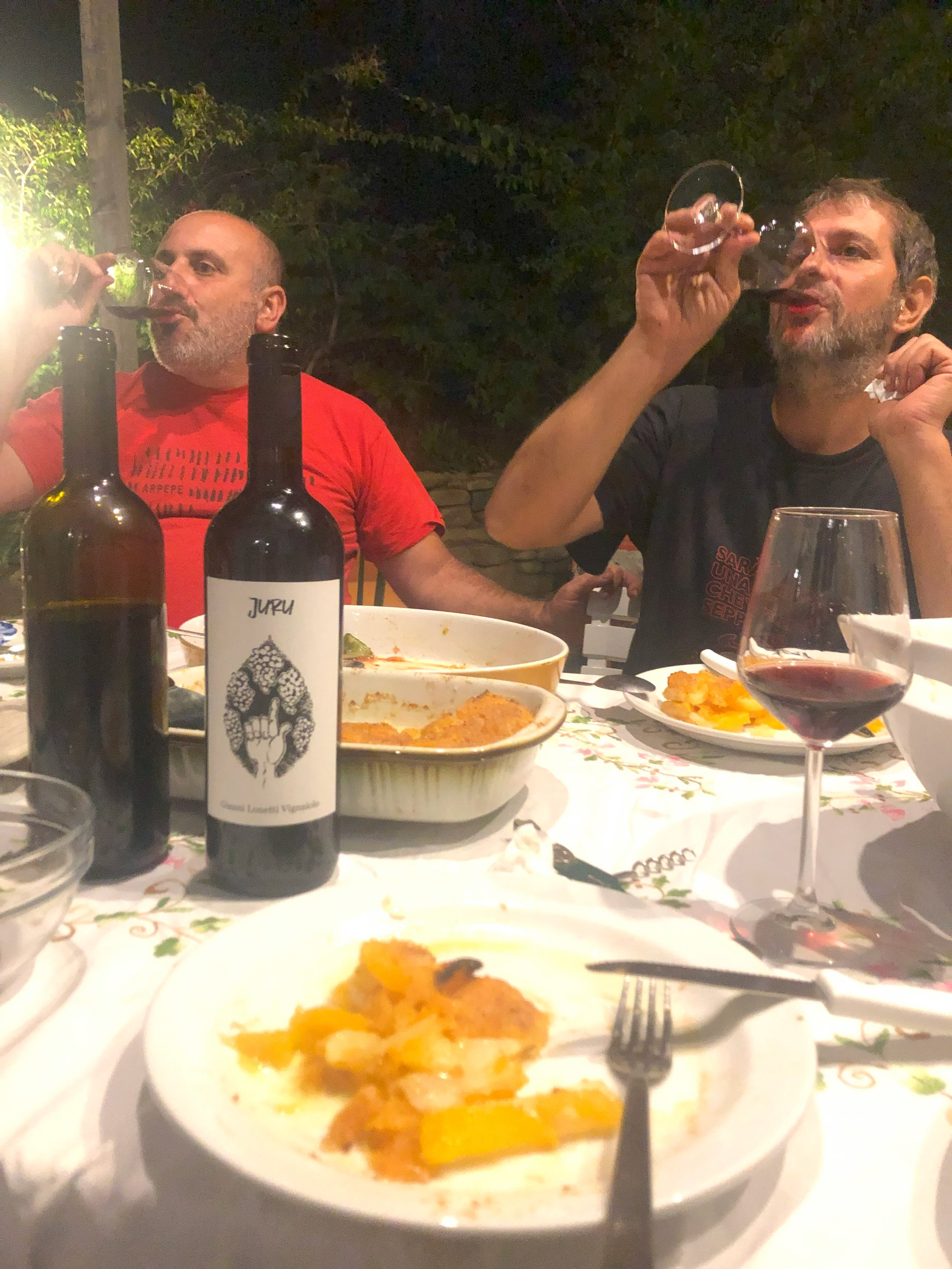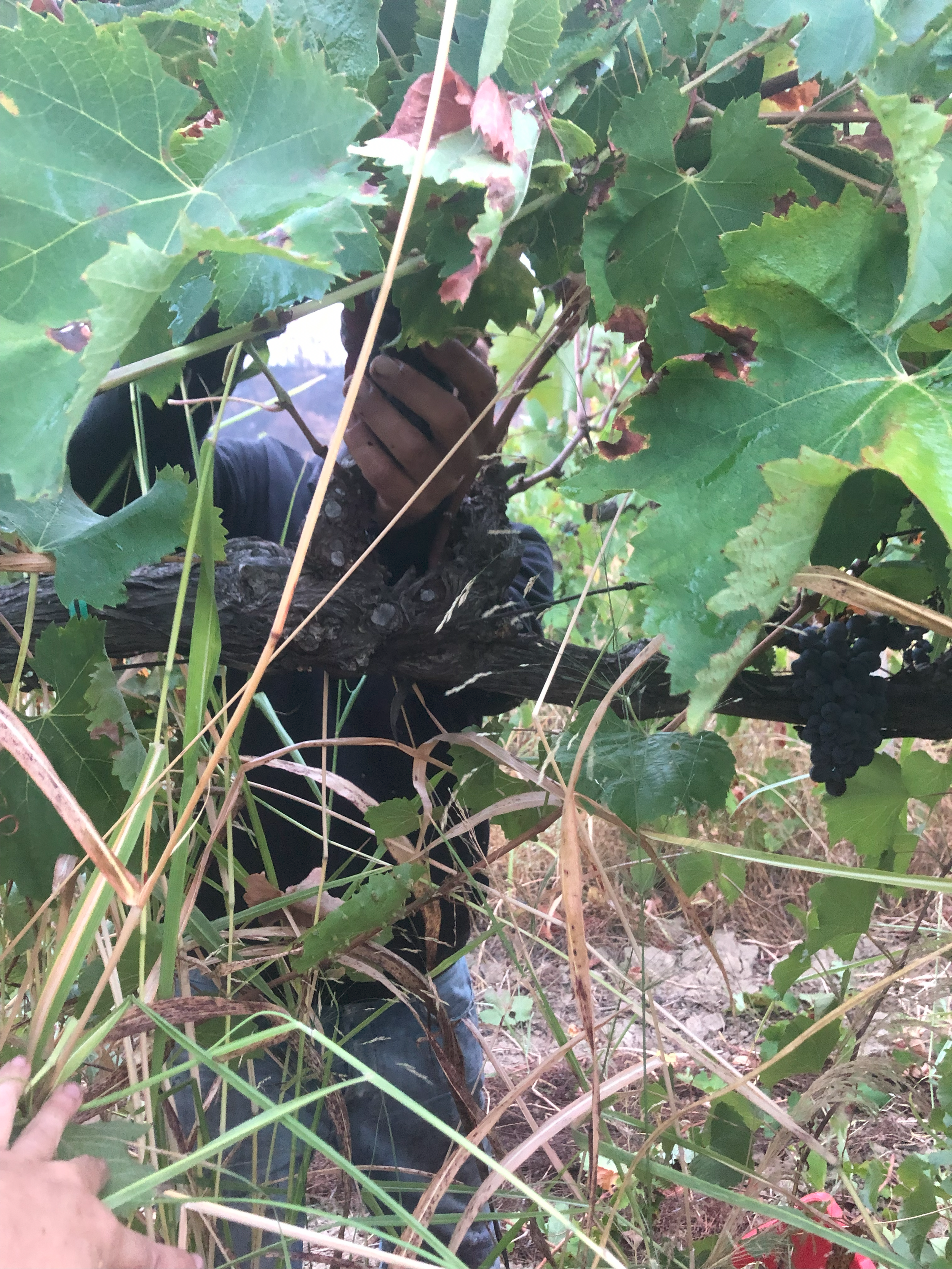Is “natural wine” synonymous with “ethical drinking”?
What if I were to tell you that the term “natural”, as it pertains to consumable products, be it beauty products, foods, and even wine, is… well, scammy? Natural as a label really has no definition within any consumer industry, which means when it comes to our capitalistic market, it is a free for all. Being so, discussions about what natural wine really is vary greatly because each individual has their own interpretation.
In my experience working with the public I have found such great degrees of discrepancy- some think orange wine* is synonymous with natural (we have marketing strategies to thank for that), while others consider no sulfur or preservative additions as the most natural. I am not anti-natural. It is not the philosophy that a wine should be clean of pesticides and be minimally processed that makes me cringe, but rather, the fact that the term is used to manipulate our purchasing decisions, leading us to believe that “natural” means, “ethical” because it is more “pure” and more real.
I began my real wine journey long before the Natural Wine Movement took hold. My palate’s preferences had already gravitated to a style I did not yet fully understand, I just knew the wines had a particular profundity to them and I simply found them pleasing. Revelatory wines for me were from Salvo Foti on Mt. Etna and the entire I Vigneri group that focused on organic viticulture, a particular vine training system traditional to Mt. Etna, and no additives in the winemaking process save for small amounts of sulfur (under 50mg/L. Conventional wines have upwards of 150mg/L, your packaged dried fruit upwards of 200mg!) The I Vigneri method is an entire movement with a 360° approach, a philosophy that incorporates not just a concept for viticulture and cellar practices, but the humanity behind the wine. It is a preservation of tradition that provides jobs, cultivates community, and serves as a rallying point all over Sicily. This effort to get back in touch with the humanity of winemaking and its greater purpose beyond simply providing a bottle of alcohol, is actually from where this current natural wine trend came.
As the obsession with natural wine grew, so did my confusion…because technically speaking, the wines I loved would fall under this category, but they were not presented to me in the same way. Instead, I confronted cloudy, stinky, flawed juice. A flaw could be an actual fungal “infection”, such as Brettanomyces, which gives off that quintessential barnyard note in wines. A flaw could also mean high degrees of Volatile Acidity, which has that varnish, nail polish tone. All perhaps acceptable in small amounts, but when they become the main flavor profile, they become a sensory overload.
To understand what was happening not just on the market, but to my senses, I embarked on a life changing journey to Ciro’, Calabria. It was 2020, the peak of the pandemic. Thankfully, I was able to travel because I am an Italian citizen, but despite being legally allowed in, travel was still difficult. Airport vending machine medical masks, vaccine documents, and a two week quarantine period later, I showed up at Francesco and Laura de Franco’s blue stucco home in the rolling hills of Ciro’. Francesco and Laura were producers I had come to admire, just as I did Salvo Foti. I am not alone in this sentiment as the wines have a bit of a cult following- people recognize the name ‘A Vita before they can point to Calabria on a map. Their wines speak, they are unique, they are made with native and organic Calabrian grapes, they have no additives, they are unflawed, they are…natural?
Francesco tesing the babbo level (sugars) of a wine in fermentation.
After spending three months working with ‘A Vita, it became clear that Francesco’s obsessive nature in the vineyards and cellar is why he is able to accomplish such precise wines with no additives. In the vineyard, we cut away any mold in the bunches we picked. Francesco would lament constantly that some of the workers would not take this extra step. He placed the blame on the Calabrian mentality of quantity over quality: “For them, it’s about how much the crate weighs because when you sell grapes, you sell by weight. Even though I pay them a daily rate, they still can’t change their habits.” He’d pick up bunches from the crates, “Voglio uva sana!”, I want healthy grapes! He’d shout across the rows of vines, as the click of forbici (scissors) and thuds of the casciotte (dialect for crates) sounded away. In the cellar, we cleaned constantly. No harsh chemicals, maybe citric acid and low doses of sulfur in water, but mostly just water. We did not leave a grape skin behind and if we did, we heard about it.
Between picking grapes, days of letting the skins sit with the juice (maceration), hours long pressings of the skins, pump overs, and of course cleaning, constant cleaning, there was also rich human interaction and conversation. There were 10AM second-breakfast-grape-picking breaks in the vineyards, where dialect and laughter were thrown around. There were discussions about when the organic spraying occurred and how it may or may not have affected the crop that year. The weather in April. Phone calls amongst winemakers in the area, maybe even a stop by the cellar to commiserate on how the vendemmia (harvest) was going. Chiacchiere (chats) about other producers in the area, how they make wine as well their familial ties and heritage (in a small town like Ciro’, Medieval gossip is still ripe). In between conversations, we ate local products often jarred or cured by someone’s mother, and discussed why the wines went so well with the food. There was humanity, in the fullest sense of the term.
In Ciro’, there is a group of winemakers that call themselves the Ciro’ Revolution, their philosophy being that quality wines of Ciro’, made with organic grapes and no additives, exist. In the South of Italy, it is not common to find winemakers as a bonded group- there is still a competitive and individualistic mentality and one person’s gain is someone else’s loss. The Revolution is not just about quality wine, it is about banding together for the greater good of the region. Being one of the poorest regions of Italy, with a median household (4+ people) income of €16,000, Calabria especially needs this energy. We have witnessed this coming together of producers on Mt. Etna, which has been a major contributing factor to the region’s success- producers that promoted the region as much as their personal agenda. While it may sound woo-woo, the quality of the wine changes when there is humanity and community behind it, when the wine is less about following a formula and checking boxes, and more about presence and connection. REAL wines.
These are the wines that have laid the foundation and are the inspiration for Cittavino & Co. By definition, they are organic, small production, farmer wines that could be categorized as natural…but we do not call them that because these producers think the term pigeonholes them into a trend and associates their wines with the flawed, low quality versions on the market, ultimately devaluing all they invest. As a sensation, they are dynamic and profound, with purpose and a philosophy behind them. They are real in every sense of the word and because of that, they just taste better.
Cataldo Calabretta and ‘A Vita from the Ciro’ Revolution
In late Fall/early Winter, we will receive a Cittavino & Co. exclusive (I’m so excited!) from Gianni Lonetti, who has been studying and working under Francesco from ‘A Vita. Gianni’s wines come from his family’s vineyards in Melissa, a neighboring town, but are still made with the native Gaglioppo and Magliocco red grapes. Gianni and I have been working together on exporting his wines to the States for three years now, it’s truly a dream come true.
Gianni and Francesco working the piccolo (little) press.
Cataldo Calabretta and Gianni comparing notes and tasting Gianni’s recently bottled 2022 Juru and his 2021.
Picking in Ambrogio’s very overgrown vineyard that everyone talked so much s&%t about (non si mantiene una vigna cosi’! you don’t maintain a vineyard like this!). Don’t worry, it wasn’t behind his back, it was straight to his face.
*Some terms defined…
Orange Wine
Made with white grapes that are macerated and then the juice is left in contact with the skins, picking up pigment and in many cases, tannin. White wine usually comes from white grape juice immediately pulled off the skins with very little to no contact.
Filtration
Unfiltered wines can still be clear. Racking is not filtration-the process is simply draining the clear juice off the top of the sediment after it has settled at the bottom of the tank. Some producers will use an actual filter, but they are often wide mesh filters to remove any potential large matter and the wine would still be categorized and described as “unfiltered”. The resistance on filtration really pertains to sterile filtration, in which the mesh is so fine it strains out any potential microbial threat. Many feel this type of filtration also takes away from the wine’s integrity and flavor profile.
Conventional
No certifications. It is free form and follows the rules set forth by a larger governing body, such as the USDA. In the context of viticulture, it typically means that the vines are treated with chemicals and the wine itself can also be also pumped with additives (sugar additions, acid additions, fining agents, etc.). Most of your generic, cheap grocery store wine will fall into this category.
Natural
No certifications. A loose term that has no defined parameters, but many use it to define low-intervention, low additive wine, made with (fingers crossed) organically grown grapes. It should be considered on a case by case basis.
Sustainable
Certifications in this realm exist in California (CCSW), the Pacific Northwest (LIVE), New Zealand (SWNZ), among other niche programs. All these certifications have different codes, but often apply to sustainability beyond viticulture and winemaking (i.e. renewable energy and labor laws). In the EU, there is no official certification and much like natural, it is a rather loose term that still permits for herbicides, pesticides, and additions in the cellar. It should be considered on a case by case basis.
Organic
Applies only to viticulture and grape growing in the EU where only Copper and Sulfur sprays can be used to control disease pressure. In the United States it means the same agriculturally, but also applies to winemaking and ZERO sulfur additions are permitted. For domestic wines, it is a very restrictive certification, for EU wines, it allows for restrictive vineyard practices, but conventional-like freedom in the cellars.
Biodynamic
Follows all the Organic principles, but the main difference is that grapegrowers are required to prepare certain treatments according to the offical Biodynamic code/book in the vineyard. This practice requires the grower to be in tune with natural growing cycles of the moon and natural treatments, such as compost prepared on site. Additions and manipulations in the winemaking process/cellar are slightly more restrictive than Organic.
Demeter is a term we do not hear or see too often, but is the closest certification to “natural” out there— it is the most restrictive when it comes to additions in the winery, and even requires spontaneous fermentation (no selected yeasts for fermentation). It applies to the cellar/ winemaking, not agriculture/viticulture. A Demeter winery must grow or use certified Biodynamic grapes. Sulfur additions, however, are not heavily regulated and the wine can still have have up to 100mg/L of sulfur.
I Vigneri (pron. ee veen-yaeri) takes its name from an association that existed in the Catania province in 1435, Maestranzi dei Vigneri, an association of vineyard workers in eastern Sicily. Today, I Vigneri is an association between Salvo Foti, local vine experts, and grape growers. The Vigneri do all the work that needs to be done in the vineyards throughout the year: plant; prune; graft; repair the dry lava stone lava stone terraces. The main goal being the organization and preservation of Mt. Etna and eastern Sicily’s wine heritage.
